#Teaching Malay language
Text
Meaningful Learning in Malay Language: Primary School Remedial Education
INTRODUCTION
In this age of globalization, the world community has received various changes influenced by the development of technology. Industry and education in a country will be affected because the services provided are for the improvement and change of a community or society that now receives technological skills. All information or info is shared with various technology mediums that can be…
View On WordPress
#Educational techniques#Effective learning methods#Language learning facilitation#Language skills development#Malay language learning#Meaningful learning strategies#Primary school education#Remedial education#Student engagement#Teaching Malay language
0 notes
Note
Haha, I got a tattoo of a dandelion on my right hip to remind myself that I'm strong and I matter. It's a little small though. I didn't really think about it. I'm probably going to add my flowers there since the hip canvas is so large.
I originally wanted to dye certain strands of hair different colors of the rainbow, but the lady got it wrong and dyed my whole head and bleached only once (I have black hair), so it looks like a late desert sunset, which I can't be too mad about if I can describe it like that.
Living with my boyfriend felt pretty natural, despite almost have never lived with any males on the house. But we're both introverts and we survived quarantine together which is good haha.
I'm glad you're heading towards your masters! Taking those freelance jobs are so important for you to add onto your resume. I'm trying to switch careers but it's hard with very little experience to my chosen career.
Oh yeah! I do rmbr you saying something about Hokkien. I still think it's funny for you to choose that language since it's not as common. And why Mandarin? Do you have a lot of clients or people around you that speak that too?
ahhh so interesting!!! i'm so glad to hear all of that, all that self-love, and surviving quarantine with your partner generally is a good thing, haha! (love love love the dandelion tattoo meaning and the potential expansion!!!)
haha! funny but not so funny is that hokkien is my mother tongue; the dialect of my family because we're hokkien! it's just that i never got around to learning it when i was younger bc i was already juggling with three languages as a child, so it never came through. the same with mandarin but bc my bf's grandma only speaks either mandarin or cantonese, so I'm trying to learn mandarin to speak to her better! i guess there were a lot of reasons for me to learn, but there's also a lot of reasons why i didn't learn but potato-potata, we're here now!
all love to you, smiles! glad to hear from you hehe <3
#kind people#<3333#theres just so many languages used in Malaysia and if you're chinese#the additional language of mandarin and dialects on top of english and our national malay language takes the cake#so being malaysian chinese#:")#i grew up speaking english at home and malay at school and went to mandarin classes and my mom tried to teach me hokkien but it flopped#so that's where we are now HAHA!
2 notes
·
View notes
Text
untuk hari bahasa ini, saya cubalah mengajarkan semua tentang sikit budaya melayu dan berkongsi kosa kata juga (ENG TRANSLATION)
(for this language day, I will try to teach a little about Malay culture and share vocabulary as well)
i made the original post detailing some fun stuff abt my culture of being malay (specifically from perspective living as a Malay from Singapore), i want to do an english translation so its more accessible to those who don't speak malay. This isnt an exact translation (plus im adding mroe additonal info) so keep that inmind
FIRST, what is the Malay language? This is an Austronesian language, also the national language in Brunei, Malaysia and Singapore. Malay is usually written in Latin script, also known as Rumi. There is also Jawi script based on Arabic writing. If you want to know (most) letters in Jawi, this is a video stuck in my head from Andalus (I'm bad at writing in Jawi and Arabic too, even though I study, I don't know much;;;)
Malay culture is deeply connected with Muslim culture, that's why a lot of malay festivities and celebrations revolve around the islamic calender. one such celebration is Hari Raya. there are two ceremonies; Aidilfitri and Haji, I will talk about Hari Raya Aidilfitri only because it is close this year and most well known (for context, its litterally in april this year).
The previous month is Ramadan where we fast/puasa. We do not eat from Subuh (around sunrise) to Maghrib (around sunset) (these are two of the names of the prayer times, in Islam we are supposed to pray around 5 times a day during different intervals. it goes Subuh, Zohor, Asar, Maghrib, Isyak). Before dawn, want to eat Sahur and then pray. At Maghrib, want to eat to break the fast/ berbuka puasa (usually say "buka" for short). Also in this month before Aidifilti, the family will prepare by cleaning the house for visitors, buy new baju kurung, get kuih, etc etc.
aaaa there are a lot of kuih, here's anything I can name (many are from Singapore); kuih lapis, kuih salat? ondeh ondeh, kuih bahulu, kuih dadar, BISKUT CORNFLAKES OMG does that count?. there are many more lol.

ALSO! In Singapore, during Ramadan, there is a huge Night Market in Geylang. Not only in Geylang there is a night market but this is very popular. There are MANY stalls selling food. Everyone who buys from geylang night market knows Ramly Burger, deep-fried Oreos, vadai, KEBAB, DENGDENG. (I like to buy rolled ice cream and chicken kebab mmmm)
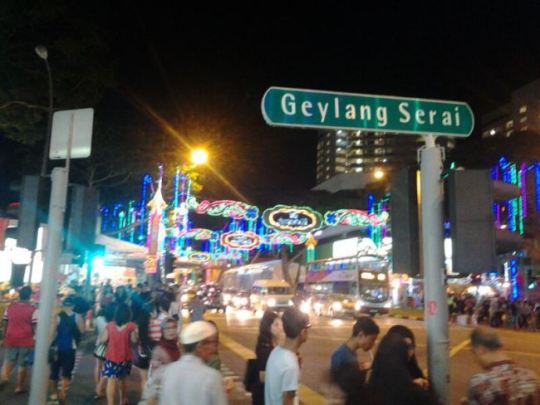
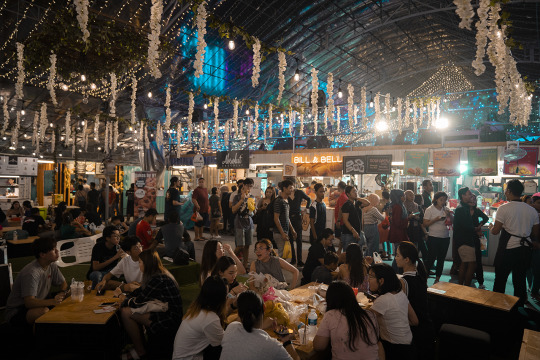
In Geylang too, they will buy traditional clothes to visit family. Baju kurung (ehh for traditional clothes, women wear baju kurung, men wear baju melayu but the names are the same anyway) is the normal clothing. Often, one household will choose to coordinate colors together (but it's not mandatory, lmao my family doesn't care)
For men, they wear songkok (that flat black hat) and samping (the long scarf wrapping around the waist)
For women, wear a sarong (skirt) with a long top. If desired, will also wear a tudung (type of hijab) (i should also clarify for muslim women its their choice whether they want to habitually wear hijab. its not just specific to just baju kurung. for example i have lots of aunties that dont wear hijab at all meanwhile i have a lot of aunts who do)
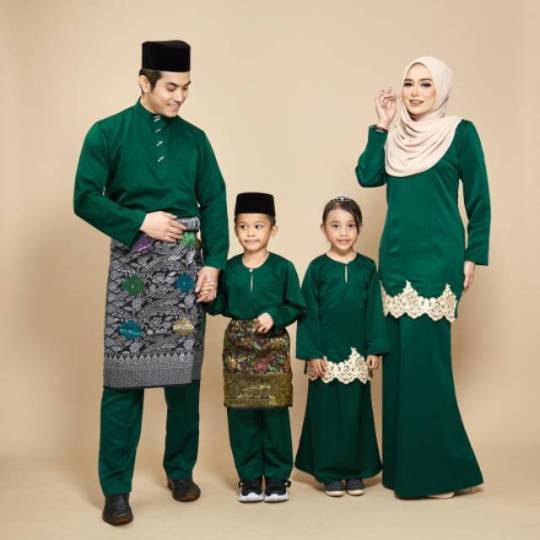
Baju kurung is also worn at other festivities, such as weddings

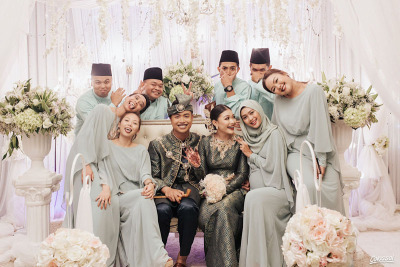
(my whole childhood I attended so many weddings, this is another topic lmaooooo)
On Hari Raya Aidifilti but before going to raya (this is what we generally call going out to see family), close family in will ask for forgiveness. (it's important the forgiveness is not one-sided, the adults will also ask forgiveness from the younger family members too). Usually this is when people start crying. After that, we go RAYA!!! When in someone else's house, if you are not working now, you can get duit raya! (because I grew up in singapore surrounded by chinese influence, I also call this "angpao" too)
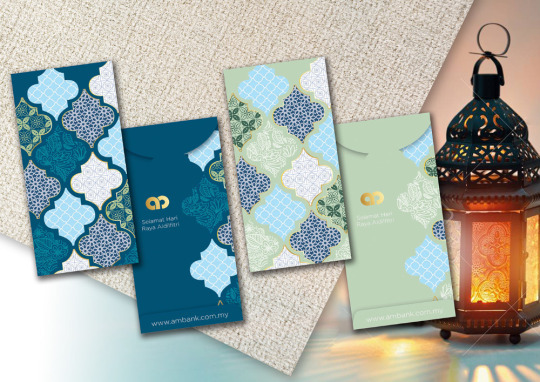
OHHHH THERE IS A LOT OF FOOD;;;; My grandmother would cook a lot during Ramadan and Hari Raya. Rendang, lontong, KETUPAT OHHH KETUPAT, CHICKEN CURRY (my mother every aidifitri cooks green chicken curry, FOR HARI RAYA AIDIFITRI ONLY, ohhhhh that's my favorite part, ASBFKASB I'M HUNGRY.)
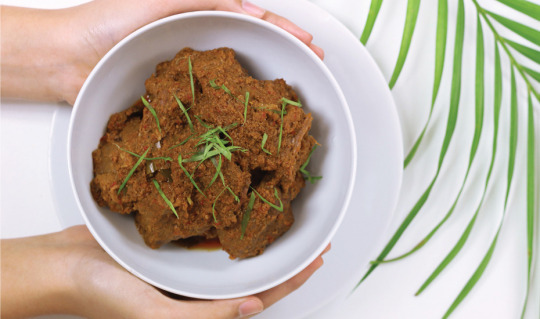
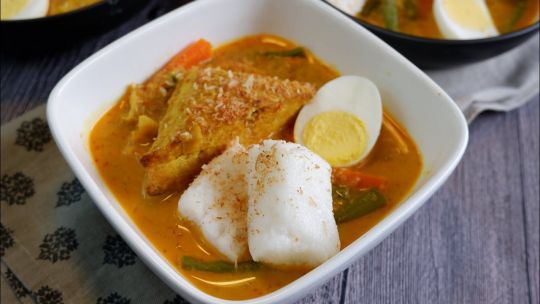
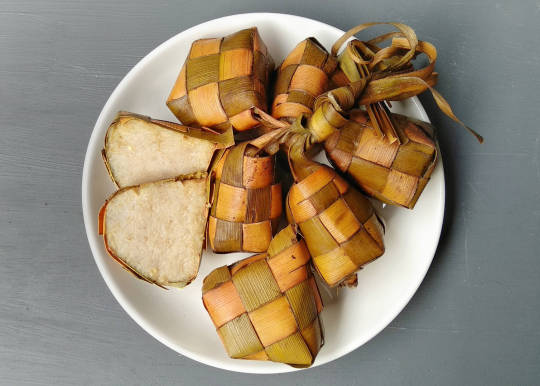
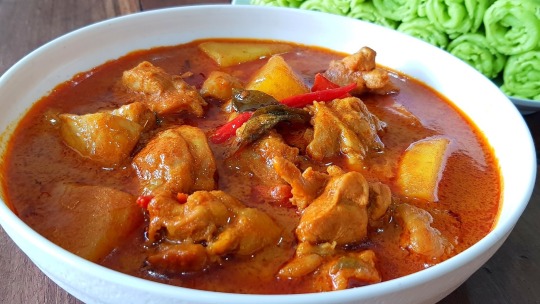
(theres also like way more cuisine than this, iu havent even mentioned nasi goreng and nasi lemak and briyani and FUCKIGN BEGEDIL;;;;)
ketupat is kind of icon to represent Aidifilti holiday, for example:
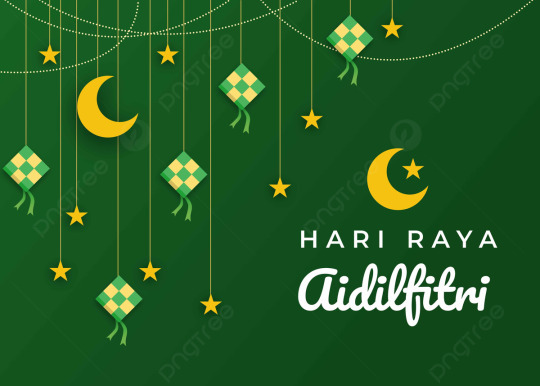
other icons of hari raya include: bunga api, neon string lights, bamboo torches, etc.
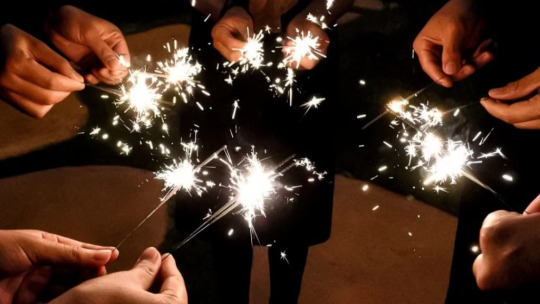
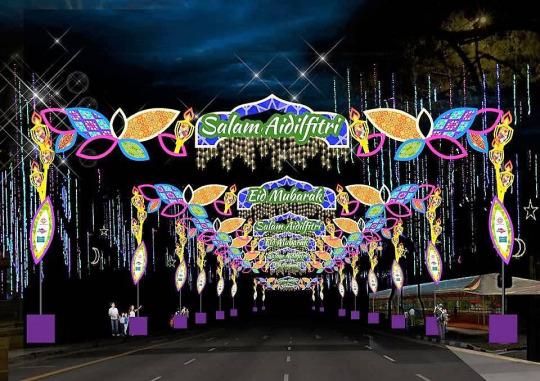

I love Hari Raya even thoug my feet hurt ALOT after visiting LOTS OF FAMILY AND FRIENDS OH MY GOD:;; it's okay if you take your shoes off in the house somehow your FEET WILL HURT at the end of the day;;;;;;
uhhhh others about malay culture? we have art! A martial art is silat melayu! I don't know much about this but it's great

there is performance art: one example is dikir barat
youtube
juga ada permainan, ada yang terkenal ialah wau (kite)

and congkak (like that one club penguin game, mancala, im not kidding)
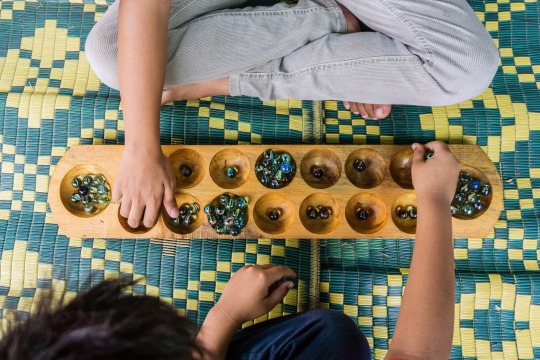
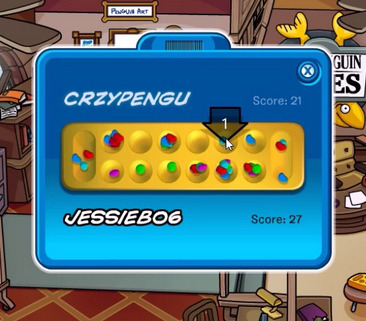
there are many malay cultures that are also from indonesian culture because of its influence. (Mainly malay culture was influenced by its neighboring cultures such as from Thailand, Sumatra, Java. Malay culture were from Hinduism before then converting to Islam) That's why we have wayang kulit (natively from Java)
(a lot of indonesian culture and malay cultures share similar things because of kinda their similar roots and their spread of their own culture, hence why we also have similar dishes, traditonal clothes, even our language is kinda 70% the same)

Do you know; Singapore was discovered by Sang Nila Utama and was originally Malay kingdom (at that time the island was called Temasek before it was owned by the British) (the original indigenous of Singapore are called Orang Laut, litterally translated to "people of the sea"). That is why in Singapore, the language and the national anthem (Majulah Singapura) is in Malay. Singapore is not only for Chinese people, we Malays and Indians are also here;;;
(and im not at all from malaysia god please none of my relatives are. Malaysian is referring to the country, Malay is the language and the ethnic group)
There's a whole lot more I haven't even touched on, like lmao there's a whole thing about weddings and a whole baby shower thing.
theres also a lot of singaporean stuff i want to share i haven't even mentioned singlish but thats a post for another time
55 notes
·
View notes
Text
I’ve been here in Malaysia for close to four months now, and I’ve been studiously trying to learn the language because I feel that it adds depth and texture to how I perceive and experience my life here. Words give shape to thoughts and emotions, and whenever I am able to attach a Malay word to my thoughts and emotions, it somehow feels like I am experiencing them for the first time.
Whenever I look at the KL sunset I think, “That’s merah” - red. Whenever I eat something delicious, I think, “Sedap.” Whenever it’s hot outside, which is everyday, I think, “Panas.”
When my family visited me here in KL last February, I took my brothers out to eat late dinner at a local restaurant. I was super proud of myself when I ordered food in Bahasa Malaysia. “Makan sini, dua ayam goreng, satu nasi goreng, satu nasi putih, satu mee goreng, tiga kopi.” My brothers were impressed, and I silently thanked my local friends for teaching me how to order the previous week.
After my family went back to the Philippines, I came home from work one night and I thought “Saya penat dan sedih” - I am tired and lonely. “Sakit hati” - my heart ached. For my family, for my friends, for my dog.
I learned that when speaking with friends, you refer to yourself as “aku” instead of “saya,” and to the other person as “kau” instead of “awak” because it’s more casual that way. “Saya” and “awak” are reserved for polite conversations, and of course I would take any chance I can to be impolite with friends. But when a local friend gifted me with baju kebaya, a traditional outfit in Malaysia and other Southeast Asian countries, for Hari Raya, “Saya terenstuh” - I was touched. I couldn’t bring myself to think “Aku tersentuh” because it felt rough, and the emotion that welled inside me that time was just so soft.
It hasn’t been easy for me living in a foreign country. Being away from my family and everything I’ve known my whole life. And yet, “Aku rasa gembira” - I feel happy. I AM happy. Sini dan sekarang. Here and now. Sebab - because - for the first time in years, aku boleh rasa. Aku rasa hidup. I can feel. And I feel alive.
I just need more words to describe this new way of life.
38 notes
·
View notes
Text
Info for writer in Thai series fandom: Cultural differences in each area
Depending on what we want to talk about, we can divine it in a variety of ways. Now that we're talking about culture, I'll use the one divided into four sections, as shown in this map.
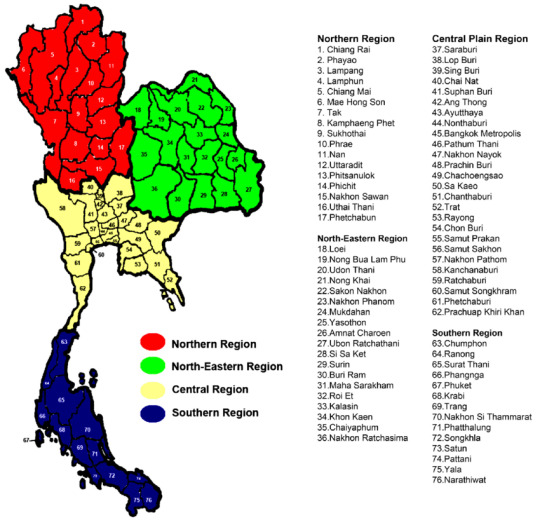
These four are Northern, Northeastern (Isan), Central, and Southern.
The majority of the series are set in Bangkok, which is in Central Thailand, so that is what you usually see.
Language
Our official language is Central Thai, but we have quite a lot of others. Northern Thai (Khammueang) from the north, Isan from the northeast, and Southern Thai from the south are the most popular in each area If we don't count the official one.
Kham Muang has a similar grammar, only a little different from the Central Thai language, but uses different vocabulary. Originally used in conjunction with the Tham Lanna script, which is the alphabet of the Lanna Kingdom that uses the Mon alphabet as a model, Kham Muang can be divided into Western Lanna accents. (in Chiang Mai, Lamphun, and Mae Hong Son) and an Eastern Lanna accent (in Chiang Rai, Phayao, Lampang, Uttaradit, Phrae, and Nan), which are partially different.
The Isan language, or Isan Lao language, is a local development of the Lao language in Thailand. Local speakers still think of it as Laotian. The Thai government recognizes this language as one of a Thai language.
Southern Thai has a high concentration of language speakers in the fourteen provinces of southern Thailand. Some are scattered in Prachuap Khiri Khan Province. Tanintharyi Region in Myanmar and around Kedah State, Perlis State, Penang State, and Perak State in northern Malaysia. There are about five million native speakers, and about 1.5 million use it as a second language. These include Chinese, Peranakan, Malay, Uraklavoi, and Mani ethnic groups.
They each have their own subset of accents and dialects.
We also have "copper language(ภาษาทองแดง)," which the Dictionary of Southern Dialects B.E. 2525(1982) mentions as a way to speak where the speaker is "speaking a central Thai language mixed with a southern language or speaking distorted," which includes anyone who uses the Thai language in a way that deviates from the standard set, not limited to being a person in any region or province.
I've heard a lot of stories about people from an area that doesn't use Central Thai that have misunderstand some sentences as being in the actual Central Thai language. But it's actually not, and it just contains Central Thai words, but not in the same way that people in Central Thailand would understand them as Central Thai. So when they moved to Central Thailand for any reason, they'd use them and expect Central Thai people to understand them a certain way, and they had to find out in an inconvenient way.
EX:pai song ไปส่ง
Central = to take someone to their destination but not stay with them after doing so.
Northern = to take someone to their destination, stay with them throughout whatever activity they intend to do there, then go back together.
As I said at the beginning, Central Thai is our official language, so that is the language that is taught in school. Other languages are usually taught by unofficial means, so it is not uncommon for the new generation to not be able to speak them fluently even when they come from a household that does. But sometimes everyone in the area speaks the other language, so even the teacher in school who is supposed to teach kids central Thai is not that fluent in it. It can be that case too.
As a person who only knows Central Thai, I can recognize some popular words in the others and understand some words that sound just a bit different, but if someone truly speaks in those languages, I will likely be unable to follow the conversation.
In the clip below, at 17.30, they use a word play with Isan and Central. Kha (ค่า) means worth, while Kha (ข่า) means galangal. In a Central Thai accent, these two words will have different tones, but in an Isan accent, Kha (ข่า) will sound just like Kha (ค่า) in Central Thai.
youtube
Food
Most northern dishes have a mild flavor. Fermented soybeans are commonly used in cooking. There are many types of chili paste. The carbohydrate sources are mainly glutinous rice.
Isan food has a distinctive taste that is salty from fermented fish sauce, spicy from fresh and dried chili, and sour from local vegetables such as tamarind. Isan people use pickled fish as a seasoning for almost all kinds of food, such as bamboo shoot soup, om, mok, and various chili pastes, as well as papaya salad, for example. The menu focuses mainly on seasonal vegetables. The carbohydrate sources are mainly glutinous rice.
The central region has long been a trading center and has been in contact with foreign countries for a long time, causing food to be influenced by many nations. And, as the King's residence during various reigns, the recipes have been developed to be meticulous. The taste of food will not focus on any particular flavor. It must be salty, spicy, sour, and sweet together to be considered good, variety of flavorings are used to achieve that. Coconut milk is used in many foods. The carbohydrate sources are mainly rice.
The southern region is the region with the most coastal areas. There is seafood as the main food. It is cooked with herbs to mask the fishy smell, especially turmeric. The taste is quite strong, and many dishes have vegetables to eat along with it to reduce the spiciness. The carbohydrate sources are mainly rice.
Geography
for geography, we usually divide it into six parts.

North
Most of the terrain consists of mountain ranges interspersed with plains and valleys.
The most important mountain ranges are Luang Prabang, Dan Lao, Thanon Thong Chai, Phi Pan Nam, Khun Tan, and Phetchabun Mountain Range.
Cities located in the basin area, such as Chiang Mai, are often facing serious air pollution problems.
The highest peak in the north and in the country is Doi Inthanon.
It is the headwaters of Thailand's four major rivers, namely the Ping, Wang, Yom, and Nan.
Central
It is a river plain. It is split into upper and lower central sections.
The upper central region has a high- and low-Undulating Plain landscape.
The Ping River and Nan River flow together at Pak Nam Pho, which is the source of the Chao Phraya River.
The lower central region is a wide plain formed by river sediments, suitable for cultivation.
Northeast
The terrain is mostly plateaus and mountain ranges.
There are Dong Phaya Yen Mountain Range, Phetchabun Mountain Range, Phanom Dong Rak Mountain Range, and San Kamphaeng Mountain Range.
It has the Chi and Mun rivers, which are important rivers that flow into the Mekong River.
Eastern region
The terrain consists of river plains and coastal plains.
There are Khao Banthat and Chanthaburi mountains in the middle of the region.
There are lined islands such as Koh Chang, Koh Kood, Koh Sichang, Koh Lan.
Prachinburi Province and Sa Kaeo are not connected to the sea. The region's other provinces all have seaports.
Western Region
The terrain is mountainous, with alternating plains and valleys similar to those in the north.
Phetchaburi and Prachuap Khiri Khan are connected to the sea.
Thanon Thongchai and Tanaosri are significant mountain ranges.
It is the origin of the Kwai Noi River (Sai Yok) and Khwae Yai River (Si Sawat), which converge to form the Mae Klong River in Kanchanaburi before flowing into the sea.
South
The terrain is mountainous along the peninsula.
The important mountain ranges are the Phuket Mountain Range, the Nakhon Si Thammarat Mountain Range, and the Sankalakhiri Mountain Range.
It is a natural border between Thailand and Malaysia.
Most of the rivers are short. The longest line is the Tapi River.
There is an open lake (lagoon), Songkhla Lake. It is one of the largest in Southeast Asia.
A few random examples for Tradition, Superstition, and Art.
Northern
If you remember the Yi Peng Festival in Chapter 6, it is a Northern tradition.
Tan Tung(ตานตุง)
Tan is to offer/dedicate
Tung is a kind of flag
Tan Tung is a form of merit making. A Buddhist ceremony. The flag that will be hung is the most noticeable difference from other region ceremonies.
Spirit
In the north, there are many spirits worshiped in a culture that people in other regions just not do.
Phi Arak(อารักษ์-guard) has a duty to protect the country and the community.
Phi Khun Nam(ขุนน้ำ-stream from a top of mountain) is responsible for providing water to the fields.
Phi Fai(ฝาย-weir,dam) is responsible for protecting the city of Weir.
Phi Sop(สบ-meet) Nam(น้ำ-water) or Phi Pak Nam(ปากน้ำ-estuary, mouth of a river) are responsible for protecting the area where two rivers meet.
The word "phi(ผี-ghost)" has a negative connotation in central, but in the north, it refers to all spirits, including the sacred spirit or god.
Life Prolonging Ceremony
It means to make one's life auspicious, to live comfortably and free from all diseases, and to prosper forever.
If you want to search for their traditional dance, ฟ้อน (Fon) is the word.
Northeastern (Isan)
Phaya Tan(พญาแถน)
Phaya Tan is a word for gods in the Isan region. The highest Tan is called Tan Luang and is believed to be Indra in other regions.
Naga
Naga is a prominent figure in Isan. I have been repeatedly told that many Isan people believe in Naga existence.
The Boon Bang Fai, or Rocket Festival, is a large festival held to honor Phaya Tan, with an origin story involving Naga.
People from Isan considered the time this festival occurred as a time they should return home and meet with their family and friends in their hometown.
There are glowing balls that occasionally rise from the Mekong River that people call Naga fireballs. They are believed to be fireballs that Naga spits out from under the river.
หมอลำ-Mor lam is a type of music from Isan that is a big genre of music in Thailand.
If you want to search for their traditional dance, เซิ้ง (Serng) is the word.
Southern
Nang Talung-หนังตะลุง is a type of shadow play, one of the local performing arts of the South.
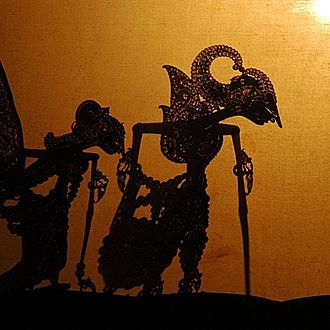
Nora โนรา
Nora dance, in my opinion, is both an art and a superstition. I'm not sure where it came from, but I've heard about how some Nora practitioners treat it like mediumship, saying that if they are chosen by the spirit, there is no way to say no (to the way of living as a Nora performer).
In Pattani, Yala, Narathiwat, and Satun, as well as parts of Songkhla and Chumphon, the majority of the population is Muslim. Because Thai Muslims and Thai Buddhists have some cultural differences, there are some noticeable differences in the area where Thai Muslims are more prevalent when compared to the rest of the country. However, even when they are a minority in other areas, they are still dispersed throughout the country, with the largest number of residents in Bangkok, so I would say that the culture in those areas will likely still be familiar enough to most people.
In the south, saltwater fisheries are much higher than in other regions due to the geographical location that is adjacent to the sea on both sides. This has resulted in differences in eating culture and other aspects of daily life in the South.
Most of the things you see in the series and from me are based in central Thailand, so I will skip it.
Example :
The protagonist of Siew Sum Noi is from Isan, as is Vee from Love Mechanics.
Country Boy takes place in the north.
Sky in Your Heart and A Tale of a Thousand Stars begin their story in Bangkok and then move the location to the north.
I Told Sunset About You is set in the South.
Index
76 notes
·
View notes
Text



Idk how/why this came to my head but i imagine Celine & Olive (my ocs) trying to teach Brahms & Billy Lenz how to speak Malay (my first language) cuz idk lol
Also i know DAMN WELL if Billy was Malaysian, he would curse out every malay swear words 😭🙏
16 notes
·
View notes
Text
SELF INTRODUCTION
Since I have not gotten a chance to properly introduce myself, I'm going to do it now. So, I happen to be twenty years old, and the nickname I have is Fiieyy. I have multiple aliases, however I made the choice to become another person with my other nickname on this app. Btw, my nationality is... idk too, I'm Malaysian and half Thai and no! i don't speak thai (maybe a little bit) but i do understands it, I can speak malay... obviously!!! chinese and english, I mostly use the chinese language tho😃
I'm actually not entirely sure what exactly to share with you guys about me honestly, I'm not an appealing person and should i tell you guys what my mbti is??? well my personality type is ISTP. Should I mention people my date of birth too??? it's in October, and I'm not here to publish fanfics, idol imagines, or all that.
Basically, I'm here to yap or essentially to talk about something related to kpop idols because broo... not one single person wants to become my friend, so clearly, I'm right here solely to talk about all the idols and read all of the "fanfics" that are authored by skilled writers, shout out to all the wonderful writers out there!! bless you guys for continuously feeding my delulu thoughts, I adore you guys🥹🎀
Thats all ig...
note:
English wasn't my primary language growing up, and I am deeply sorry for my poor proficiency in it. I'll continue to teach myself on how to further enhance my english skills and abilities in writing so someone please correct the spelling and my grammar mistakes, Thank you and have a great one.
12 notes
·
View notes
Text
i need an actual structured language course to learn my husband's first language but everything teaches indonesian and not malay

9 notes
·
View notes
Text
Toya with s/o whose native language is Malay
────── ✱*.。:。✱*.:。✧*.。✰*.:。✧*.。:。*.。✱ ──────
a/n:im aware that it's already 3 am here and I got other request to make but I'm really tempted to make this(translation at the end)
context:(self indulgent) toya x malay speaker! s/o
tw:none
────── ✱*.。:。✱*.:。✧*.。✰*.:。✧*.。:。*.。✱ ──────

❥ he first heard you talk in malay while you're complaining about the heat of the summer
❥ he's surprised but also impressed
"ahh...panas weh, boleh cair aq..*¹"
".. (name), im confused. What language is that?"
"Oh? It's malay, my native language"
❥ he asks you to teach him that language the next day
❥ i mean learning malay kinda help you in english right?
"So I is 'saya' if wanna say formally and 'aku' if you wanna say informally"
*nods* "oh..there's multiple alternative to say it.. I see.. "
❥ im sure he'll be doing some research about that language and he'll surprised you with some romantic phrases
"Saya sayang awak*²"
*cue to me falling down the stairs if i ever heard him say that*
────── ✱*.。:。✱*.:。✧*.。✰*.:。✧*.。:。*.。✱ ──────
translation:
*¹ - "ahh...it's so hot i could melt.."
*² - "I love you"
#toya's#miyawrites#toya aoyagi x reader#aoyagi toya x reader#project sekai x reader#pjsekai x reader#aoyagi toya#toya aoyagi#x reader#project sekai#pjsekai#self indulgent post#its so short omg
12 notes
·
View notes
Text

books i read in 2024:
"babel: around the world in twenty languages"
gaston dorren
rating: ⭐️⭐️⭐️⭐️⭐️
genre: nonfiction, linguistics
synopsis:
English is the world language, except that most of the world doesn't speak it--only one in five people does. Dorren calculates that to speak fluently with half of the world's 7.4 billion people in their mother tongues, you would need to know no fewer than twenty languages. He sets out to explore these top twenty world languages, which range from the familiar (French, Spanish) to the surprising (Malay, Javanese, Bengali). Babel whisks the reader on a delightful journey to every continent of the world, tracing how these world languages rose to greatness while others fell away and showing how speakers today handle the foibles of their mother tongues. Whether showcasing tongue-tying phonetics or elegant but complicated writing scripts, and mind-bending quirks of grammar, Babel vividly illustrates that mother tongues are like nations: each has its own customs and beliefs that seem as self-evident to those born into it as they are surprising to the outside world.
Among many other things, Babel will teach you why modern Turks can't read books that are a mere 75 years old, what it means in practice for Russian and English to be relatives, and how Japanese developed separate "dialects" for men and women. Dorren lets you in on his personal trials and triumphs while studying Vietnamese in Hanoi, debunks ten widespread myths about Chinese characters, and discovers that Swahili became the lingua franca in a part of the world where people routinely speak three or more languages. Witty, fascinating and utterly compelling, Babel will change the way you look at and listen to the world and how it speaks.
#nonfiction#nonfiction literature#booklr#books and reading#book recommendations#moodboard#aesthetic#book moodboard#litedit#my moodboard#babel around the world in twenty languages#literature moodboard#literature aesthetics#linguistics
4 notes
·
View notes
Text
Meaningful Learning in Malay Language: Primary School Remedial Education
INTRODUCTION
In this age of globalization, the world community has received various changes influenced by the development of technology. Industry and education in a country will be affected because the services provided are for the improvement and change of a community or society that now receives technological skills. All information or info is shared with various technology mediums that can be…
View On WordPress
#Educational techniques#Effective learning methods#Language learning facilitation#Language skills development#Malay language learning#Meaningful learning strategies#Primary school education#Remedial education#Student engagement#Teaching Malay language
0 notes
Text
[CULTURE] Our Interests and Surroundings moulded our Linguistics Skills - Talk about the Bumis in Malaysia and Johor Heritage

Disclaimer: The Javanese mentioned here are the Javanese descendants in Malaysia and not Indonesian Javanese. In particular, Orang Jawa Johor (The Javanese People of Johor). And 'speak Malay' indicated Bahasa Melayu Johor. Everything shared is based on my observations and personal experiences of myself and Nadia, except wherever sources were cited.
***
Malays in Malaysia are diverse in ethnicities.
Within my family circles, they are Orang Jawa(The Javanese), Orang Bugis(The Bugis), Orang Laut(The Indigenous Malays of the Sea), Melayu Riau(Malays from Riau) and Orang Bajau(The Bajau). Often in Malaysia, especially in urban areas, if you have a slight Malay genetic makeup and you are a Muslim, your race is automatically a Malay. It was not until I went to University that I realised that was not always the case. Many Malaysians actually chose their ethnicities as their race in their NRIC(National Registration Identity Card).
My first exposure to this understanding was with my old friend back in the University.
Since he was from Sabah, I was not sure what his race was and was curious. So I asked, and he answered, “I’m Bugis.” I was baffled, cos no one ever told me their ethnicities in the first meets. So, I asked again, “So, you’re a Malay?” He again emphasised, “No. I am Bugis. Not Malay.” I’m confused. I was like, “But, ain’t Bugis also Malay?” He said, “Nooo… in Sabah, Malay and Bugis are different!” From there I understood that in East Malaysia they considered their ethnicity as their race, and most of them are sensitive about it. I also had a Muslim roommate who looked, Malay. She was from Sarawak. She had the same name as mine but with a Lee surname. So, I casually said, “Oh, your mom is Malay and your dad is Chinese?” She smiled and said, “No, I am not Malay, I’m half Melanau. And yes, my dad is Chinese.” There is Melayu Sarawak, but I learned that there is no such thing as a general term of Melayu Sabah. In Sabah, they do have Melayu Kedayan, Melayu Brunei and Melayu Cocos, tho. Although Kedayan is technically of a different ethnicity, they seem not to mind much being called Malay cos it seems they were quite similar or related(according to people I met)? Similar to the case of Kadazan-Dusun ethnicities. Due to their diversities in Sabah, most younger generations of Sabahan speak Bahasa Melayu Sabah which unites them. Unlike in Sarawak, people do speak Bahasa Melayu Sarawak, as much as many people speak Ibanese, too, due to large Iban populations.
A few years later, I helped my youngest sister sort her things in her hostel at a Polytechnic in Shah Alam, Selangor.
I can’t remember what the headlines but I saw a few candidate posters stating names, ages and races on the walls. What caught me was Bugis. I asked my sister, “There’s a lot of East Malaysians here?” “She replied, there are but not much. These are Bugis from Johor actually.” That was my second wave of understanding the local cultural dynamic. It hit me, that in suburbans, where one ethnicity is concentrated, they do tend to use their ethnicity as their race, regardless they are Westerners or Easterners of Malaysia. Although, generally in West Malaysia, we don’t really mind being labelled as Malays. I was ignorant because I had a cousin-in-law in Johor who speaks Bugis at home, but her NRIC still stated her race as Malay. Her family identified themselves as Melayu Bugis. She grew up in Kampung Bugis in Pontian. And my uncle(by marriage to my paternal aunt) is a Bajau from Ulu Tiram, Johor. But, he is Malay in his NRIC.

The unfortunate part about living in urban areas is, that the children tend not to use and practice the minor languages.
My cousins admitted that my uncle did teach them the Bajau language growing up, but since their grandparents had passed away and they lived in Johor Bahru, they did not practice and had forgotten most of it. My Uni bestie is from Labuan, her dad is a Dusun from Beaufort, Sabah. Even though she went back to the village at least once a year growing up, she only understands a bit and does not speak the language. Since all her cousins are also of mixed ethnic backgrounds, they simply used Bahasa Melayu Sabah. She used primarily Bahasa Melayu Sabah in her daily life in Labuan and speaks English at home. Her mother is a German-Chinese of Sabah. One of my besties in Johor Bahru, Nadia, speaks no Javanese except a few common phrases, despite inheriting some percentage of Javanese blood from her parents and visiting Kampung Jawa yearly for Raya gatherings.
I am delighted to interview Nadia, a Javanese Malay from Johor Bahru, Johor.
Her father is of Bugis-Jawa heritage, originally from Sungai Balang, Muar, Johor. He spoke primarily Malay at home. Her late mother, however, was a full-fledged Javanese from Parit Jawa, Muar, Johor. She grew up speaking Javanese with her family and the neighbours. So, growing up until today, Nadia does go back to Muar and mingle with the Javanese community at least once a year. When her grandparents were alive, she used to visit them monthly. Her fondest memories back in the village were playing with fireworks with her cousins’ children and the bustling surroundings during “rewang” and “makan time”, especially in the festive mood of Raya.
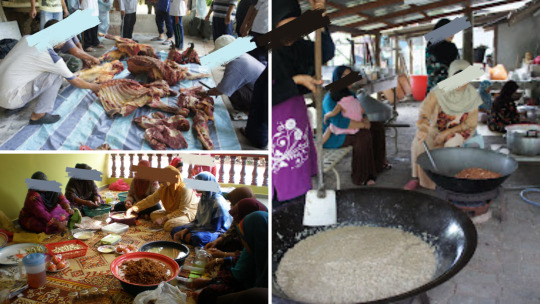
Nadia is fluent in Malay and English. Her favourite “Malay” dishes are; terung balado and bakso. A few simple Javanese phrases she can speak are like “Have you eaten?”, “How are you?” and numbers. To her, the similarity of Javanese to Bahasa Melayu Johor is only about 80%. However, she felt whenever she listens to the elders, it sounds more like Bahasa Indonesia than Bahasa Malaysia. Perhaps, due to their thick Javanese accents.
As early as her memories can reach, she has been exposed to the Javanese language since child.
Her late mother always used Boso Jowo with her immediate family and neighbours in Kampong. She remembered her late grandmother always spoke Javanese with her. It is always a fond memory of whenever her late grandmother laughs at her failure to imitate the Javanese words properly, and they laugh together. Her grandmother encouraged her to speak the language and patiently explained the meaning. Yet, the words failed to stick to her mind. Her younger self thought, that since people could understand Malay and I don’t use Javanese at home or outside of kampung, therefore, her lack of interest, hinders her progress in the language. Although she used Malay with the villagers, sometimes she will try to reply in broken Javanese. As an adult, she admitted that it would be nice if she could fully understand then the elders and people in the village converse. Like her, unfortunately, none of her cousins speaks Boso Jowo.
I once visited her village back in 2009 I think, with my family. I must say, everyone spoke Malay with thick Javanese accents there, even the local youngsters. I remember when we stopped a boy, probably around 10 years old to ask for directions, his accent was so thick that it surprised our family. My parents smiled and found it cute actually. I listened carefully to comprehend his words. After we moved on, I asked, “How come his Javanese accent is so thick, yet he’s Malaysian?” My dad replied, “We are in Kampung Jawa Cha… everyone speaks Javanese here. The boy probably rarely goes out from the village’s perimeter and is even schooled within.” When we reached her place, we were served with Nasi Ambeng Dulang. What amused me was, everyone else but us converse in Javanese. Fascinating.

Remember, Nadia’s Javanese proficiency is almost zero.
Yet, she speaks Japanese. She even took tests. She is the holder of the N5 JLPT certificate. (Japanese-Language Proficiency Test). Her Japanese is not completely grammatically correct, but, she definitely can guess any sentence if she knows the root words of the message of whatever the speakers were conveying. What inspired her to learn Japanese is her love for Anime (Japanese Animations). She finds the language cute and quirky. She has visited Japan twice: Kyoto and Osaka. Her favourite Javanese phrase is ‘Wes Mangan?’ (Have you eaten?) and her favourite Japanese phrase is ‘Onaka Suita!’ (I’m hungry!)
According to Nadia, language is a culture. By knowing different languages, you will be able to understand people better.

Me too, growing up with Johoreans and spending most of my adolescent years in Johor Bahru, I didn’t realise that we are influenced by the Javanese and Middle Eastern cultures in our foods and Malay dialects.
I only felt the differences when I visited other states and spoke with the locals. And when I found similar foods or cultures, it was due to the Javanese communities there. In some states, they do not understand what is “rewang”(community works together for the benefit of everyone, not limited to but usually for gatherings involving foods) and ‘kawen padok’(arranged marriage). I first realised the Arabic influences when I started to mingle with the Arabs back in Uni. My favourite Malay foods are Nasi Ambeng and Mee Rebus (A variation of Mee Jawa, yet less sweet and more starchy. Served with “kerak” = crunchy bits). For lauks, I love Asam Pedas Tetel and my father loved Asam Pedas Ikan Semilang. Must have Daun Kesum! It is common for us in Johor to eat in dulang(big round tray) during special occasions at the mosques or “kenduri”. We were taught that it is to strengthen relationships. The practice is not limited to only Nasi Ambeng. It can be nasi putih with other dishes as well. Or Nasi Minyak. However, I must admit, today, this tradition has been replaced by buffet menus, especially in urban houses.

As an adult, I now understand even the Malay culture in Johor is a melting pot of many other cultures.
I assumed it was due to the demographic of our trading industry, as well as the royal history. To start, let’s talk about Johor Foods. Nasi Ambeng & Mee Rebus were brought in by the Javanese. Kacang Pool by the Arabs. One of the Johor Royal Family Members back in the eras craved Spaghetti Bolognese, so the Royal Cook invented Laksa Johor. Next, Dance and Music. Zapin Johor was inspired by a type of Arabic dance and created by the local Peranakan Arab community. Kuda Kepang Johor was brought in by the Javanese and later modified by the locals to remove the unislamic rituals. Ghazal, a music inspired by the Arabs, was brought in during the Johor-Lingga dynasty by people from Riau. Keroncong which originated from the influences of the Portuguese in Java Island, was brought in due to the interest within the Royal family. Today, all of these are considered Johor Heritage.

My parents identify themselves as Melayu Johor.
My late paternal grandmother was of Orang Laut-Javanese heritage. Her family used to live by the sea near Jalan Wong Ah Fook in Johor Bahru. She was schooled at Sekolah Bukit Zahra until Primary 4. Even in her days, since she lived in the city, she only spoke Malay at home and within the community. She understood a little bit of Javanese. She then was married to my late grandfather, a Bugis-Melayu Johor. They lived their whole lives in Kampong Melayu Majidee after they got married. My grandmother sells food and my grandfather was a notice officer. My late grandfather also, only speaks Malay and basic English. Note that Melayu Johor means their heritage was all blended with no significant traits of any particular ethnicity. Therefore, my late father and his other seven elder siblings also, only speak Malay at home.
The older generation tends to speak Malay with English terms. I remember my conversation with my late paternal grandmother, “Aku nak pegi bayar pine kat bando. Nanti bagitau bapak ko.”(Tell your dad, I am going to the city to pay ‘pine’.) I was like okay. Then I relayed the message to my dad and asked him further, “Bah, pine tu ape?” (Dad, what is ‘pine’?) He answered, “Ohhh.. maktok ko nak gi bayar Fine, denda denda…” (Ohh… your grandmother wants to pay ‘Fine’, government-issued fines.)


My late mother’s heritage is more diverse.
My maternal grandfather was of Bugis on his father's side and Chinese-Siam Johor on his mother’s side. I am not sure what language he spoke growing up, but, throughout his life, he spoke Malay, English and understood Bugis. My maternal grandmother’s father was Dutch(Indonesian) and her mother was a Melayu Riau-Persian from Tanjong Balai, Pulau Karimun of Kepulauan Riau, Indonesia. When she was still a baby she was given to her child-less aunt who married a Bugis Johor and lived in Parit Sulong, Batu Pahat, Johor, Malaysia. Although she originally had many siblings, she grew up as a bratty only child in the family (according to her). She did experience Japanese school during the occupation. Thus, she primarily spoke Malay, understood English and very basic Japanese. Interestingly, my late grandfather has never been to a Japanese school, I am not sure why. At home, my maternal grandmother speaks Malay and my maternal grandfather speaks Malay and English to their children. After married, they lived in one of the government bungalows in Kota Kecil, Kota Tinggi, Johor.
My maternal grandmother is a housewife and my maternal grandfather was a medical dresser. Back in the day, dressers and nurses did almost as much as the doctors. According to my mother, he often did visitations to rural areas in Johor for medical checkups and treatments of the people. And people actually called him Doctor. He even has his own dispensary room and the back of their home in Kota Kecil. She sometimes watched her father compounding medicines, and her father would happily explain the process.

Before my parents pursued their studies for tertiary education, they did their schooling in Johor.
My father went to Ngee Heng Primary School, Aminudin Baki Secondary School(SAB) and Sultan Ismail High School (SSI). All in Johor Bahru. My mother went to Laksamana Secondary School in Kota Tinggi until Form 3, before her family relocated to Johor Bahru. She completed her secondary school at IJ Convent Girls School until Form 5. She then proceeded to Sultan Ibrahim’s Girls School during her High School years. That was when my parents met, during their bus rides.

When I was young, I always wondered, we are all Malays, yet, why my cousins on my father's side were not comfortable with English?
Most of my uncles and aunts speak English but not comfortable much, unless they were in the army or government officers. Whereas, even though we mainly used Malay in our conversations, still, everyone on my mother's side speaks and understands English well. And their basic medical knowledge is better. But, for traditional foods, definitely people on my father's side, cook more delicious delicacies! Laksa Johor and Asam Pedas were my favourites! As far as I am concerned, my mother's side never cooked Laksa Johor at home and my mother was the first in the family that regularly cooked Asam Pedas at home. But, to be fair, my mother’s side always makes delicious Ayam Masak Lemak Cili Padi, another favourite of mine, and my mother’s favourite: Asam Rebus Ikan Baung, and these were rare on my father's side. Nonetheless, since we all are Johoreans, we always eat Kuah Lodeh and Sambal Kacang on the first day of Aidilfitri!
Slowly, I observed and comprehended. One, the languages growing up differ. Hence the proficiency. Two, the family dynamic and community were different. Hence, the basic knowledge and palate differences. But these days, the youngsters, my nieces and nephews from both sides, speak English equally as well as Malay. Unfortunately, many of them equally do not know many traditional dishes.
My maternal grandmother was only comfortable writing and reading in Jawi(Malay written with modified Persian-Arabic scripts).
Everything in her phonebook by the landline phone was all in Jawi. My Jawi before secondary school was very weak, I only knew the letters and was unable to construct any sentences except for my full name. So, whenever I had sleepovers at her place and she asked me to call someone, I was struggling to look through the phonebook and always had to refer back to her. Then, there was a time after she had an eye surgery when she had to spell out the letters for me and I was ‘crawling’ searching for the mentioned name or messages in the phonebook, haha. And my maternal Mak Ngah (Second-born Aunt), who is in her 70s now, was a secretary. She also prefers to use Jawi in her shorthand notes. I, myself and my brother, can write and read Jawi. Although, not as fast as the standard modern Malay. However, both of my younger sisters can only read a little bit of Jawi. And not comfortable writing in Jawi at all.
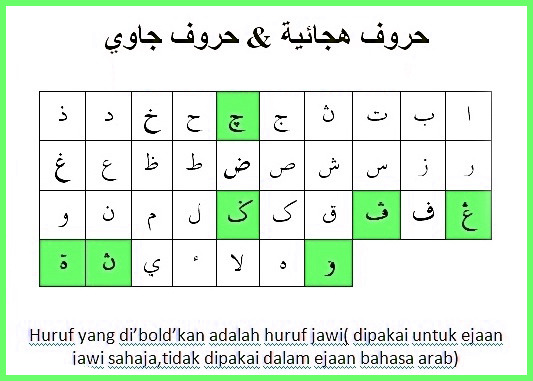
Time flies, and culture evolves. These are the reasons why State or Federal organisations and foundations are necessary to preserve and conserve our heritage in documentation. So that, our history is not wiped out in the future.
Other photos are sourced from Asam Pedas, Laksa Johor, Nasi Ambeng, Ghazal, Mosque, SSI and SIGS.
***
P/s: In my next article, inshaAllah I will write about an individual with Thai-Malay heritage in Penang.
3 notes
·
View notes
Photo

item # K19C30
RARE Rian Sema, Luang Phor Ophasi, Nua Thong Dang. A mint copper coin amulet in a shape of an inverted temple boundary marking stone with an effigy of Luang Phor Ophasi in profile in the front, on the top is with ancient Khmer texts say “O-pha-si”, and in the back with Khata of Luang Phor Ophasi in Thai says “i-thi Sukkatoh Arahang Puttho Nammo Puttaya Patawee Kongka Pra Phoomma-taywa Kama-mihang”. Made by Luang Phor Ophasi of Asom Bang Mot (today Wat Luang Phor Ophasi), Bangkok in BE 2497 (CE 1954).
………………………………………………………
BEST FOR: Rian Sema Luang Phor Ophasi (an amulet in a shape of an inverted temple boundary marking stone) creates energy shield for protection, and puts you in its boundary to stop energy interference, or drained when you’re around people. This amulet has a tendency to draw positive energy. Kongkraphan Chatrie (it makes you invulnerable to all weapon attack), Maha-ut (it stops gun from shooting at you), Metta Maha Niyom (it helps bring loving, caring, and kindness, and compassion from people all around you to you), Maha Larp (it brings Lucky Wealth / wealth fetching), and Kaa Kaai Dee (it helps tempt your customers to buy whatever you are selling, and it helps attract new customers and then keep them coming back. Ponggan Poot-pee pee-saat Kunsai Mondam Sa-niat jan-rai Sat Meepit (it helps ward off evil spirit, demon, bad ghost, bad omen, bad spell, curse, accursedness, black magic, misfortune, doom, and poisonous animals). It helps protect you from manipulators, backstabbers, and toxic people.
………………………………………………………
Luang Phor Ophasi of Asom Bang Mot, living between BE 2441 to BE 2498 (CE 1898 to CE 1955)
Luang Phor Opasi was born, Chuan Maliphan in BE 2441 at Ban Trok Faifa, Pak Phanang District, Nakhon Si Thammarat Province with 7 siblings. At the age of 5, Chuan started his primary study and became a novice at the age of 13 at Wat Tai, Nakhon Si Thammarat, but Wat Tai did not teach Pali, so Chuan moved to Wat Tha Pho. His teacher noticed that Chuan was a smart student and advised him to go to big city to complete his Buddhism study. Then Chuan travelled to Wat Bowonniwet Vihara, Bangkok.
Chuan or Pra Maha Chuan liked to study and learned to speak several languages such as English, Tamil, Malay, Japanese, Pali and others. Pra Maha Chuan was a disciple of Luang Phor Kob of Wat Khao Sarika, Lopburi Province. Although they had never met each other personally, they communicated through telepathy during their meditations and thus Luang Phor Kob taught Pra Maha Chuan all his knowledge and the unique mediation through candle light (Grasin Fire). Luang Phor Kob himself had developed a technique of mediation that is based on the concentration on a flame. Luang Phor Kob had a great capacity to meditate without any interruption for as long as 40 days without any breaks.
When Pra Maha Chuan reached the highest level of study, His behavior started to change in a strange way, it was started from the technique of staring at the flame with continued attention for long period. He observed the precepts strictly, and in particular refused all the offerings given by any people. He tossed all gifts to the bonfire by saying that these objects were temptations which will make him unhappy and that the fire was the solution to this problem. On one occasion, Pra Maha Chuan failed to put out the fire at Wat Bowonniwet Vihara, this made the villagers very unhappy. They didn't understand why Pra Maha Chuan behaved like this. This leads to many villagers thinking that he had simply become insane. Pra Maha Chuan was requested to leave Wat Bowonniwet Vihara but he was then invited to go to Asom Bang Mot, Bang Mot, Bangkok by a White-robe Master, Archan Bow.
While Pra Maha Chuan was staying at Asom Bang Mot, he called himself “Ophasi”, and people called him Luang Phor Ophasi ever since. Luang Phor Ophasi became very famous for his supernatural ability and fortune telling. Luang Phor Ophasi soon became that well- known that visitors came from far places to have Luang Phor Ophasi foresee their future or to ask Luang Phor Ophasi to perform a miracle for them, that made Luang Phor Ophasi too busy, and skipped his meditation practice. Luang Phor Ophasi then decided to give out amulets as gifts to those which would carry them and to give them to the visitors that asked him to predict their future, and ask them to leave Luang Phor Ophasi in peace. During these years Luang Phor Ophasi also made other amulets such as the Garuda amulet, portraits of himself and King Rama V. Nowadays these amulets are all in collectors’ hands. Many copies were made, and it is extremely difficult to get the authentic items made or blessed by Luang Phor Ophasi.
In BE 2498, Luang Phor Ophasi and two of his disciples were invited to a Buddhist gathering in India that was held on October 28. Luang Phor Ophasi told his two disciples to leave before him and that he would join them later. He also told them that he will not be on the spot before October 31 and to inform the organizers of his delay and the date of its arrival. On that day October 31, many of his disciples went to the Bangkok airport to wish him a happy voyage, but Luang Phor Ophasi did not show up. Unfortunately, a few days later the death of Luang Phor Opasi was announced. In the evening of Oct 30, Luang Phor Opasi himself told the monks at Asom Bang Mot that he was going to remain in meditation for several days and not to disturb him under any circumstance, then he went into the monk house. On October 31, BE 2498, an anxious monk decided to open Luang Phor Ophasi’ monk house and observe whether Luang Phor Ophasi were well or not, he entered the monk house to find Luang Phor Ophasi had passed away.
During this time, in India, the two disciples of Luang Phor Opasi attended the Buddhist gathering in the company of Luang Phor Ophasi. Luang Phor Ophasi had conversation with many other Buddhists dignitaries and even gave a speech to hundreds of people, even photos of this occasion were took.
Luang Phor Ophasi said goodbye to his two disciples, and told them that he was going to return to Thailand only by other means of transport. When they came back, the disciples had a hard time believing the news of Luang Phor Ophasi's death, everyone believed that they had become insane when they said to have spent the days in Luang Phor Ophasi’s company. Only the testimony of several other monks present and the photographs in India of Luang Phor Ophasi proved the veracity of their incredible history.
Each year at Wat Luang Phor Ophasi, Bangkok, the coffin of Luang Phor Opasi is opened, his body has not decomposed. The changing of his monk robe and a manicure, and grooming of his hair is provided. This is a common thing regarding monks that have become enlightened, the body will not decompose or if the body is burned the bones will turn to relics.
………………………………………………………
*with Certificate of Authenticity issued by DD-PRA
………………………………………………………
DIMENSION: 3.30 cm high / 2.10 cm wide / 0.20 cm thick
………………………………………………………
item # K19C30
Price: price upon request, pls PM and/or email us [email protected]
100% GENUINE WITH 365 DAYS FULL REFUND WARRANTY
Item location: Hong Kong, SAR
Ships to: Worldwide
Delivery: Estimated 7 days handling time after receipt of cleared payment. Please allow additional time if international delivery is subject to customs processing.
Shipping: FREE Thailandpost International registered mail. International items may be subject to customs processing and additional charges.
Payments: PayPal / Western Union / MoneyGram /maybank2u.com / DBS iBanking / Wechat Pay / Alipay / INSTAREM / PromptPay International / Remitly
*************************************************
3 notes
·
View notes
Text
untuk hari bahasa ini, saya cubalah mengajarkan semua tentang sikit budaya melayu dan berkongsi kosa kata juga
(for this language day, I will try to teach a little about Malay culture and share vocabulary as well)
amnsklfna maafkan jika saya salah lmao also my skill in this language is atrocious dont take me as the most refined example of writing in malay i got the equivilent of a C- in my finals take that as you will. ALSO this is mostly from a Singaporean perspective, im born singaporean so yeah.
PERTAMA, apa Bahasa Melayu? Inilah bahasa Austronesian, juga bahasa kebangsaan dalam Brunei, Malaysia dan Singapura (Singapore). Bahasa Melayu ditulis biasa dalam Latin, juga dikenali Rumi. Ada juga Jawi yang berdasarkan tulisan Arab. Jika kau ingin tahu huruf dalam jawi inilah video yang tersekat dalam kepala saya daripada andalus (saya buruk tuliskan dalama jawi dan arab juga, walaupun saya belajar, saya tidak tahu banyak;;;)
budaya melayu besambung dengan budaya muslim, itulah sebab ada banyak seseorang melayu yang meraikan dengan kalendar islam. satu perayaan macam tu ialah Hari Raya. ada dua majlis; aidilfitri dan haji, saya akan bercakap tentang Hari Raya Aidifilti sahaja kerana lebit dekat tahun ini dan terkenal.
Pada bulan sebelum ialah ramadhan yang untuk puasa. Kita jangan makan dari Subuh (around sunrise) hingga Maghrib (around sunset). Sebelum Subuh, ingin makan Sahur dan selalu berdoa. Pada Magrhib, ingin makan untuk berbuka puasa (lazimnya cakap "buka" secara ringkas). Juga dalam bulan ini sebelum Aidifilti, keluarga akan sediakan dengan bersihkan rumah untuk pelawat, membelikan baju kurung baharu, dapatkan kuih, etc etc.
aaaa ada banyak kuih, inilah apa-apa yang saya boleh namakan (banyak ada daripada Singapura); kuih lapis, kuih salat? ondeh ondeh, kuih bahulu, kuih dadar, BISKUT CORNFLAKES OMG adakah itu dikira?. ada banyak lebih lol.

JUGA! Di Singapura, bila ramadan, ada Pasar Malam yang besar dalam Geylang. Tidak sahaja di Geylang ada pasar malam tetapi inilah yang sangat popular. Ada BANYAk gerai-gerai yang jual makanan. Semua yang belikan daripada pasar malam geylang tahu Ramly Burger, deep-fried Oreos, vadai, KEBAB, DENGDENG. (saya suka beli aiskrim yang golek dan kebab ayam mmmm)

Dalam Geylang juga, mereka akan membeli baju tradisional untuk melawat keluarga. Baju kurung (ehh untuk baju tradisional, wanita pakai baju kurung, lelaki pakai baju melayu tetapi nama sama-sama bagaimanapun) adalah yang pakaian biasa. Selalunya, satu isi rumah akan memilih untuk menyelaraskan warna (tetapi ia tidak wajib, lmao keluarga saya tidak kisah)
Untuk lelaki, mereka pakai songkok (that flat black hat) dan samping (the long scarf wrapping around the waist)
Untuk wanita, ada pakai sarong (skirt) dengan baju. Jika inginkan, juga akan pakai tudung (type of hijab)
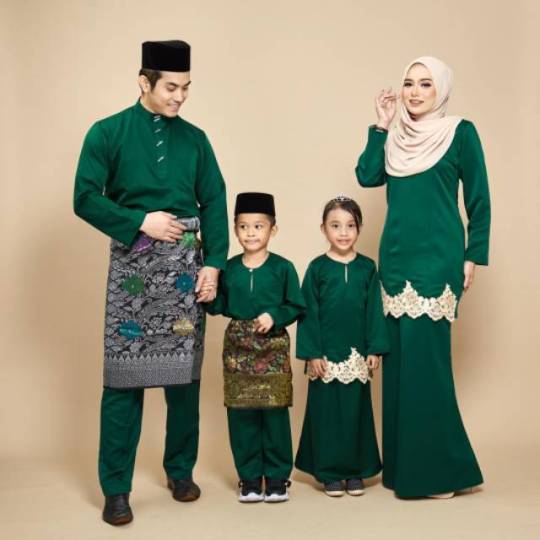
Baju kurung juga dipakai pada perayaan lain, contohnya ialah perkahwinan

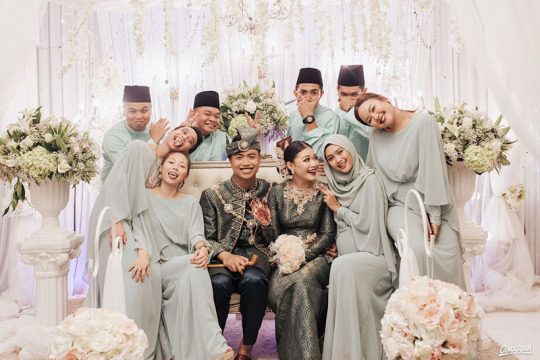
(seluruh zaman kanak-kanak saya hanya menghadiri majlis perkahwinan, inilah topik lain lmaooooo)
Pada Hari Raya Aidifilti tetapi sebelum pergi raya, keluarga rapat akan minta ampun. Selalunya apabila orang mula menangis. Selepas itu, pergi RAYA!!! Apabila dalam rumah seseorang lain, jika kau tidak berkerja sekarang, boleh dapatkan duit raya! (kerana saya dibesarkan di singapore dikelilingi oleh pengaruh cina, saya juga memanggil ini "angpao" juga)

OHHHH ADA BANYAK MAKANAN;;;; Nenek saya akan memasak banyak pada ramadan dan Hari Raya. Rendang, lontong, KETUPAT OHHH KETUPAT, KARI AYAM (ibu saya setiap hari raya aidifitri masakan kari ayam hijau, UNTUK HARI RAYA AIDIFITRI SAHAJA, ohhhhh itulah bahagian kegemaran saya, ASBFKASB SAYA LAPAR.)
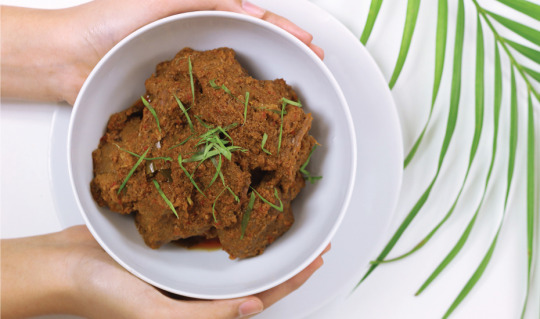


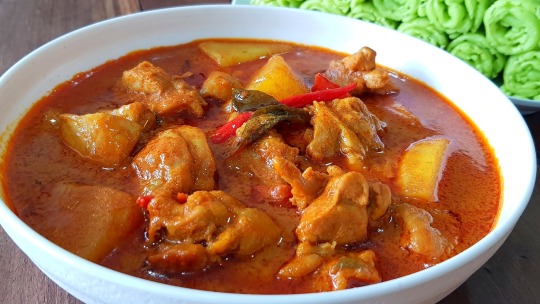
ketupat ialah... macam ikon untuk mewakili hari raya Aidifilti, contoh:

ikon selain untuk hari raya adalah: bunga api, neon string lights (macammana cakap;;;), apa apa ini, obor buluh, etc.
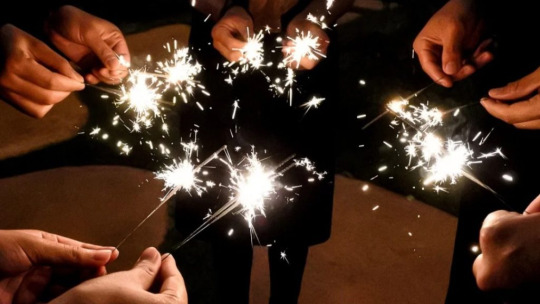
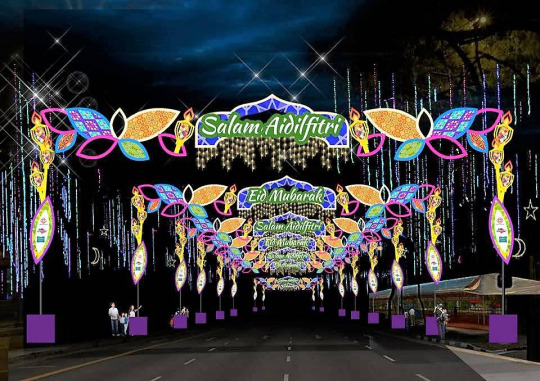

Saya suka hari raya walaupun, kaki saya lebih sakit selepas melawat BANYAK KELUARGA DAN KAWANNYA YA ALLAH:;; tidak mengapa jika kau menanggalkan kasut di dalam rumah entah bagaimana KAKI AKAN SAKIT pada penghujung hari;;;;;;
uhhhh lain-lain tentang budaya melayu? kita ada seni! Satu seni beladiri ialah silat melayu! saya tidak tahu banyak tentang ni tetapi sangat hebat
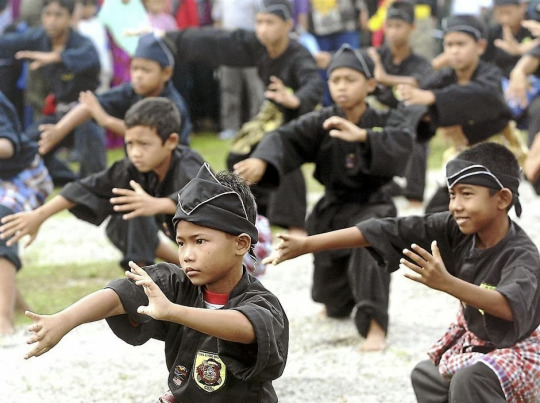
ada seni persembahan: satu contoh ialah dikir barat
youtube
juga ada permainan, ada yang terkenal ialah wau (kite)

dan congkak (like that one club penguin game, mancala, im not kidding)
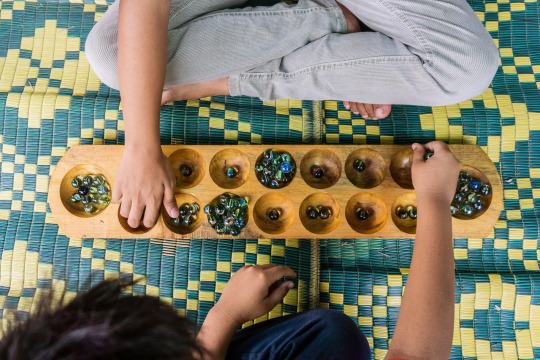

ada banyak budaya melayu yang juga daripada budaya indonesia kerana pengaruh ia. Itulah sebab kita ada wayang kulit (natively from Java or Jawa in melayu)

Adakah kamu tahu; Singapura ditemui oleh Sang Nila Utama dan mula-mula asli Melayu (pada masa itu pulau itu dipanggil Temasek sebelum dimiliki oleh British). Itulah sebab dalam Singapura, bahasa dan lagu kebangsaan (Majulah Singapura) ialah dalam bahasa melayu. Singapura bukan setakat orang cina, kita orang melayu dan india pun ada di sini;;;
OK THAT'S ALL IVE GOT HHEHAH SAYA TULISKAN SELAMA BERJAM-JAm BAI
4 notes
·
View notes
Note
LMAOOOO they really are just a bunch of silly yokai vying for your attention,,, like “your laundromat is neutral ground BUT YOU LIKE US BETTER THAN THEM RIGHT. RIGHT”
UHH it depends on if you consider mandarin and hokkien separate languages bc if you then that makes 4 languages yea DJDNDJ i wanna learn more languages in the future too but i wanna fix up my mandarin first lmao
REAL THOUGH LIKE theres 3 japanese people in into1 AND THATS NOT COUNTING THE OTHER 2 THAT GOT RIGGED OUT,,, cfans dont seem to hold the ww2 atrocities against individual japanese people, more of the government and certain places (ie that shrine in japan that commemorates their ww2 soldiers. a chinese actor took a selfie there once and instantly got blacklisted)
I MEAN 😭 everything is cheap here because our economy is in shambles so 😭😭 but i do agree that our food cant be beat just *chefs kiss*
LMAOKDJDKD groveling rihi is just so entertaining to me like yea big tough guy!! but also absolutely folds if you dont give him attention every 5 minutes
but yea xikers is fun!! theyre all younger than me so i baby them a lot. and they recently released this absolutely TERRIFYING horror content and i felt terrible bc one of them got so scared he started CRYING i must protect
plsss companies suck ;; trcng is already kinda free from TS but ghost9 is still in maroo’s basement,, ALSO YES HES IN MONOTREE
AND YOURE SO RIGHT y/n CAN DO THAT SO TRUE,,, princess peach yudai,,, now thats an art prompt
LMAODKDJDKDJDN OMG OK SO LOWKEY,,, A PROFESSOR OF MINE HAS RAGGED ON DJS TOO MUCH LMAO,,, im from an art school and so we tend to have very. unique people. and my professor was like “i can excuse furries but i draw the line at djs” AND NOW EVERY TIME I SEE NISHI DJ I REMEMBER THAT LINEJDNDJD but im sure y/n is very happy LMAOKDJD
YES you keep giving them cop out answers like "yeah idk" or even worse the "you guys both suck" but they're going to get an answer out of you some day!!!!!!!!!!!!!! and also i just realised what this au entails when you put 97-99s as kitsunes bc kitsune ren is so right in my head it's just so. it makes so much sense. it's so real. oh my god. it's so factual. every time he walks in he deviously pilfers something from under your nose and when he leaves he WILL put it in the tip jar size be damned
if you try telling me anything in hokkien i won't understand anything so i'll quantify it as a separate language :rofl: languages are so cool though!!!!!!!!!! my friend's viet and she keeps teaching me random phrases like "hey girl", "i love you", and "oh my god" LOL. you can do it!!!!!!! mandarin i think is the easiest to learn from the chinese branches like. for what reason does cantonese have like 6 tones my days
you know what fair. my japanese teacher once said that the history books in japan, fully regulated by the government, are pretty heavily tilted on a bias towards themselves so kids don't get taught things like the nanjing massacre or unit 731. also THERE WAS RIGGING ofc there was rigging act shocked! and yeah my dad was telling me about the shrine when the actor got banned lmfao.... he was not impressed
SACRIFICES MUST BE MADE i'm pretty sure all of the currencies are weaker than the main western powers like the british pound and american dollar so sea keeps getting a bunch of weird tourists who think they can exploit the people there. but i think theyre fighting back by putting a tourist tax of double price LOL. kind of unrelated but i keep getting malay singapore beef on my insta fyp. it's so funny and i'm not even a citizen of either country. sometimes you just need to bring up the ringgit to inflict ultimate damage
damn it you have to feed your big clingy cat guy!!!!!!!!!!! he desires attention!!!!!!!!!!!!!! also i think you get unintentional scary dog (cat) privilege like no way am i going to do smth devious with him hanging off your shoulder
WHAT he started crying............. was he ok................... free my bro.................... also i swear having idols debut younger than you is such a reality check to how old you're getting LMAO there was this 14 (!!!!) year old aussie olympian who won gold in skateboarding........ like i was NOT winning the olympics at 14.
ts ent was so horrendous i can't believe they did all of their groups that badly.... bap copped it so bad. thank god theyre a thing of the past...... hopefully ghost9 can escape the dungeon omfg. AND AHHHH MONOTREE hwang hyun is doing so much justice for onf its crazy!!!!!! and it's always a bit of a relief when you see them on the track list of some mini album lmao
love yn theyre so cool to me. and also IT IS. hes so pretty he would pull it off so well. truly smth to consider
YOURE FROM AN ART SCHOOL damn ok i see who im talking to. dont mind me and my piddly attempts at drawing please /j but FR thats HILARIOUS literally just people who dress up as anthropomorphic animals are ok i GUESS but god i cant STAND the bluster and swagger of those noisy musical "artists"
#also the main founding members of monotree were formerly part of sweetune so IM OBLIGATED TO LIKE THEM#asks#im sorry i yapped a bit but anything to procrastinate work am i right!!!!!!!!!!
0 notes
Text
Degrees in Paradise: Malaysia's Allure for International Students
Malaysia has emerged as a prominent destination for international students seeking quality education, diverse cultural experiences, and attractive academic opportunities. Whether pursuing full-time degrees or part time degree Malaysia programs, students are drawn to Malaysia's vibrant cities, excellent universities, and unique blend of modernity and natural beauty. In this blog, we explore why Malaysia has become a preferred choice for international students, the benefits of studying there, and what makes its educational landscape appealing.
Malaysia: A Hub for Higher Education
Malaysia's education sector has experienced significant growth, establishing itself as a regional hub for higher education with world-class universities and colleges. Offering programs ranging from undergraduate to postgraduate levels, Malaysian universities attract students from around the globe seeking quality education in a multicultural environment.
Benefits of Studying in Malaysia
Quality Education: Malaysian universities uphold rigorous academic standards and offer programs accredited by global bodies, ensuring high-quality education and recognized qualifications.
Affordability: Compared to many Western countries, Malaysia offers affordable tuition fees and living costs, making it a cost-effective choice for international students.
Cultural Diversity: Malaysia's multicultural society provides students with opportunities to interact with diverse communities, experience various traditions, and develop cultural understanding and tolerance.
English-Taught Programs: Many universities in Malaysia offer programs taught in English, eliminating language barriers for international students and facilitating ease of communication and learning.
Part Time Degree Malaysia
Part time degree programs in Malaysia cater to students who prefer flexibility in their studies, allowing them to balance academic pursuits with work or other commitments. This flexibility is particularly advantageous for those seeking practical experience while earning their degree, enhancing career prospects and personal development.
Top Universities in Malaysia
Universiti Malaya (UM): Malaysia's oldest university consistently ranks among the top universities in Asia, offering a wide range of undergraduate and postgraduate programs.
Universiti Teknologi Malaysia (UTM): Renowned for its engineering and technology programs, UTM is a leading institution known for its research excellence and industry partnerships.
Taylor's University: Recognized for its business, hospitality, and communication programs, Taylor's University offers modern facilities and a conducive learning environment.
Sunway University: Known for its strong academic programs across various disciplines, Sunway University emphasizes research-led teaching and international collaborations.
Practical Considerations for International Students
Visa and Immigration: International students must obtain a student visa to study in Malaysia. Universities typically assist with visa applications, providing guidance on requirements and procedures.
Cost of Living: Malaysia offers affordable living expenses compared to many Western countries. Students should budget for accommodation, transportation, food, and miscellaneous expenses accordingly.
Healthcare and Insurance: Ensure access to healthcare services through comprehensive medical insurance coverage, either provided by the university or independently arranged.
Cultural and Social Experiences
Festivals and Events: Experience Malaysia's vibrant cultural festivals, such as Hari Raya, Chinese New Year, and Deepavali, offering insights into diverse traditions and celebrations.
Local Cuisine: Explore Malaysia's rich culinary heritage, from street food delights to traditional Malay, Chinese, and Indian dishes available throughout the country.
Career Opportunities and Networking
Internship and Job Placements: Many universities collaborate with industry partners to offer internship opportunities and career placement services, enhancing students' practical skills and employability.
Networking: Engage in networking activities, workshops, and industry events to build professional connections and expand career opportunities both locally and internationally.
Conclusion
Choosing to pursue a degree, whether full-time or part time degree Malaysia, offers international students a gateway to academic excellence, cultural diversity, and personal growth in a dynamic and welcoming environment. Malaysia's appeal lies not only in its quality education and affordable costs but also in its rich cultural experiences and vibrant social scene.
By studying in Malaysia, students can cultivate global perspectives, forge lifelong friendships, and prepare themselves for successful careers in a globalized world. Embrace the opportunity to explore Malaysia's educational paradise and embark on a transformative educational journey that transcends borders and enriches lives.
0 notes